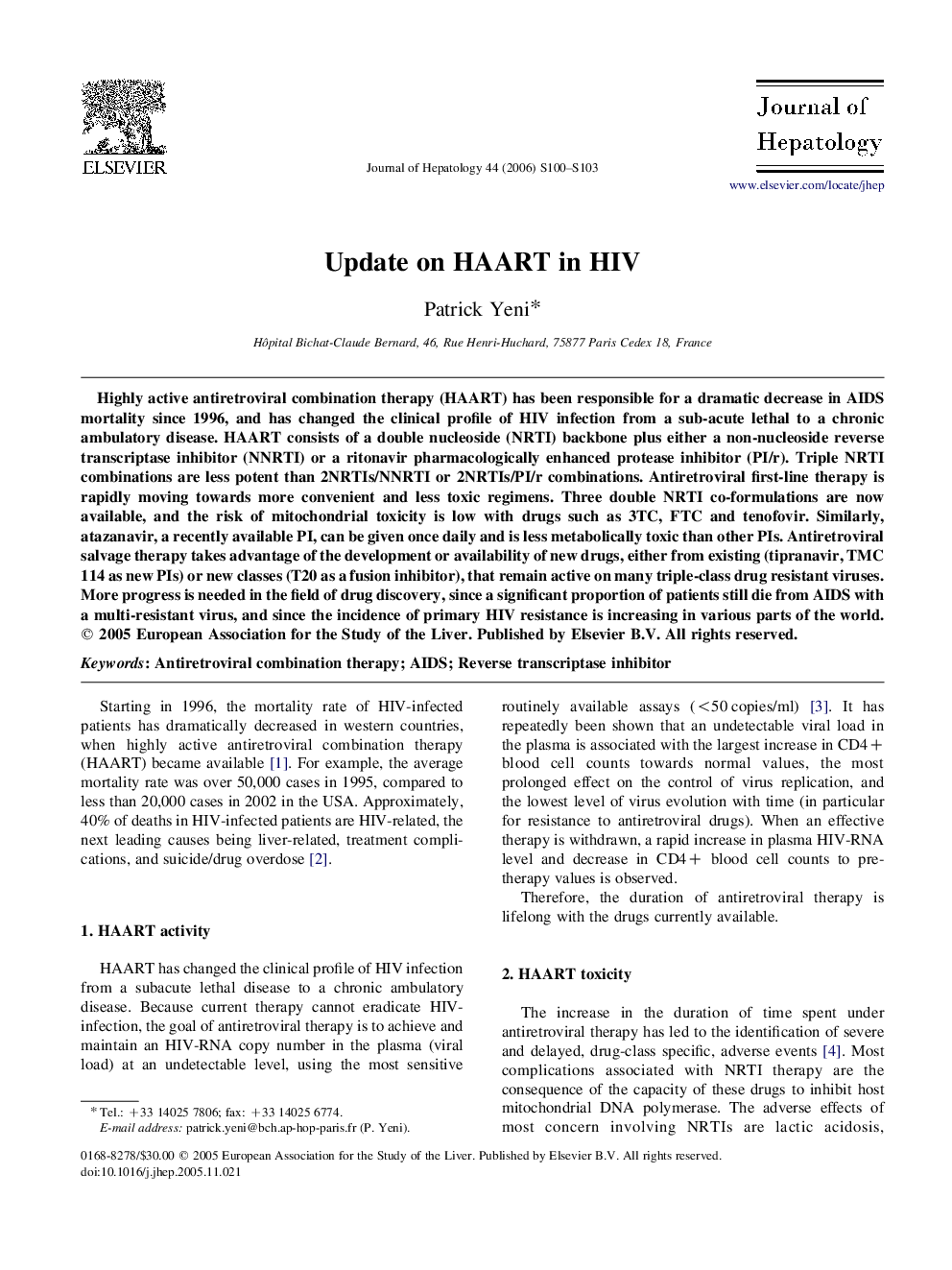| Article ID | Journal | Published Year | Pages | File Type |
|---|---|---|---|---|
| 3315423 | Journal of Hepatology | 2006 | 4 Pages |
Highly active antiretroviral combination therapy (HAART) has been responsible for a dramatic decrease in AIDS mortality since 1996, and has changed the clinical profile of HIV infection from a sub-acute lethal to a chronic ambulatory disease. HAART consists of a double nucleoside (NRTI) backbone plus either a non-nucleoside reverse transcriptase inhibitor (NNRTI) or a ritonavir pharmacologically enhanced protease inhibitor (PI/r). Triple NRTI combinations are less potent than 2NRTIs/NNRTI or 2NRTIs/PI/r combinations. Antiretroviral first-line therapy is rapidly moving towards more convenient and less toxic regimens. Three double NRTI co-formulations are now available, and the risk of mitochondrial toxicity is low with drugs such as 3TC, FTC and tenofovir. Similarly, atazanavir, a recently available PI, can be given once daily and is less metabolically toxic than other PIs. Antiretroviral salvage therapy takes advantage of the development or availability of new drugs, either from existing (tipranavir, TMC 114 as new PIs) or new classes (T20 as a fusion inhibitor), that remain active on many triple-class drug resistant viruses. More progress is needed in the field of drug discovery, since a significant proportion of patients still die from AIDS with a multi-resistant virus, and since the incidence of primary HIV resistance is increasing in various parts of the world.
